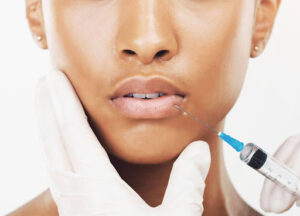Rhinoplasty, also called a nose job, is a popular surgical procedure that can transform the shape of the nose, enhancing one’s facial features and improving self-confidence. However, the recovery process is a crucial aspect that rhinoplasty patients need to consider. This article explains the healing process after rhinoplasty surgery.
The Rhinoplasty Recovery Process
Recovery after a rhinoplasty procedure is a unique journey for each patient, influenced by several factors including the surgical techniques employed, individual healing rates, and the quality of care received. To better understand the recovery timeline, it’s essential to break it down into different stages.
Days After Surgery
The initial days following rhinoplasty are crucial for proper healing. Immediately after the surgical procedure, patients may experience moderate swelling, bruising, and discomfort. It’s important to follow the post-operative care instructions provided by your head and neck surgeon practicing in facial plastic surgery, which often include:
- Nasal dressings: These help stabilize the nasal bones and reduce swelling.
- Ice packs: Applying ice packs in intervals can help alleviate swelling and pain.
- Pain medication: Prescribed pain medications can help manage post-operative discomfort.
- Saline nasal spray: This keeps the nasal passages moist and reduces congestion.
Weeks After Surgery
In the first few weeks after rhinoplasty, swelling is at its peak. The nasal skin is sensitive, and residual swelling is expected. It’s essential for patients to avoid strenuous activity, as this could increase blood flow to the nasal area and exacerbate swelling. At this stage, the shape of the nose may appear different from the final result due to initial swelling and dressing.
Months After Rhinoplasty
3-6 Months After Surgery
The most dramatic reduction in swelling occurs during the first few months. As time passes, patients can gradually resume normal activities, but strenuous exercise should still be avoided. The nasal shape begins to take on a more natural appearance.
12-18 Months After Surgery
Residual swelling in the tip of the nose can persist for up to 18 months after surgery. While the majority of the swelling subsides in the initial months, the final refinement of the nose’s shape may take over a year. Revision rhinoplasty patients might experience a slightly longer recovery period.
Long-Term Healing Stage
18-24 Months and Beyond
At this stage, most patients experience minimal to no swelling, and the nose shape closely resembles the final result. The healing timeline can vary from patient to patient, but full recovery and the achievement of natural-looking results are generally realized within this period.
How long is recovery from rhinoplasty?
How Long Does Swelling in the Tip Last After Rhinoplasty Surgery?
Swelling in the nasal tip after rhinoplasty can be a common concern among patients. The duration of swelling depends on several factors, including:
- The surgical techniques used
- Individual’s healing capacity
- The patient’s commitment to post-operative care
In general, the majority of swelling in the tip of the nose subsides within the first 3-4 months after surgery. However, residual swelling can persist for up to 18 months in some cases, particularly in revision rhinoplasty patients. It’s important to understand that each patient’s healing process is unique, and the timeline for recovery may vary.
Learn more about nose job procedures
Common Concerns and Tips for a Smooth Recovery
While the duration of swelling in the nasal tip is a common concern, it’s essential for patients to focus on other aspects of their recovery. Here are some tips to ensure a smooth rhinoplasty recovery:
- Healthy Diet: Consume foods rich in vitamins and minerals, such as fresh pineapple and leafy greens, to support healing.
- Hydration: Drink plenty of water to stay well-hydrated.
- Exercise: Gradually reintroduce moderate exercise to promote blood flow and reduce swelling.
- Avoid Contact Sports: Patients should refrain from contact sports during the initial stages of recovery to prevent injuries and discomfort.
- Swelling Management: Utilize cold compresses and follow any prescribed anti-inflammatories to minimize swelling.
- Staying Informed: Be aware of the signs of surgery and follow post-operative instructions diligently.
- Revision Procedures: Understand that revision surgery may require an extended recovery period due to the presence of scar tissue and previous surgical alterations.
Consult with a board-certified head and neck surgeon practicing in facial plastic surgery
Book a Rhinoplasty Consultation
Clinique Face MD, under the guidance of the board-certified head and neck surgeon practicing in facial plastic surgery Dr. Moubayed, is proud to deliver top-tier care. This includes a personalized consultation where Dr. Moubayed discusses your goals and concerns in order to create a tailored treatment plan that minimizes post-operative issues and optimizes results.
With the use of advanced surgical techniques like ultrasonic rhinoplasty, we aim to reduce initial swelling and improve recovery times. Our team is committed to providing continuous support, addressing concerns promptly, and working closely with each patient to guarantee their well-being and satisfaction throughout the recovery journey.
Frequently Asked Questions
Who is a good candidate for rhinoplasty?
Good candidates for rhinoplasty are individuals in good general health, who have realistic expectations and wish to improve the appearance of their nose.
What can rhinoplasty address?
Rhinoplasty can address a variety of concerns, including changing the nose’s size, shape, asymmetry, hump reduction and correcting issues like a deviated septum or breathing difficulties.
Is rhinoplasty only for cosmetic purposes?
No, rhinoplasty can also be performed for medical reasons, such as correcting breathing problems or congenital defects.





